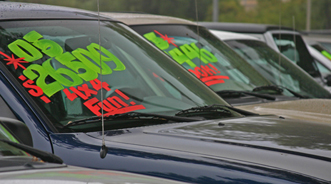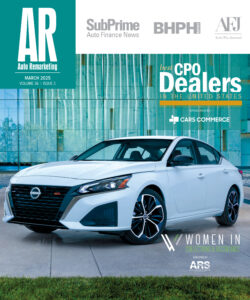CNW: Independent Dealers Make Strong Turnaround

BANDON, Ore. -
In what one particular analyst is dubbing a tremendous comeback story, independent dealers — the “Star of 2010" — are likely to see their full-year used-vehicle sales climb by about 12 percent, according to CNW Research.
The independent stores that have survived the mass closures of the past three years have pressed on and found success through consolidation, maximizing the Web and implementing more effective management systems, explained Art Spinella, president of CNW Research.
“What’s nearly amazing about this is the fact so many independents went out of business two years ago,” he noted, referring to the expected 12-percent uptick in used sales for this group. “Of the 43,000 indie outlets at the beginning of 2008, only 38,000 were still on the books in December.
“Another 2,000 were lost in 2009,” he continued. “Many were squeezed out of business by new-car dealers who pushed hard into the used market.”
Monthly sales per dealership were on the brink of dipping into the low teens, Spinella noted.
But the surviving independent stores fostered a “systematic resurgence” thanks to aforementioned tactics involving the Web, management systems and consolidation.
And 2010 has seen greater stability in the population of independent dealers, Spinella stressed.
The year began with 38,125 independent dealers and all but “barely 400” are still open, he shared.
“Additionally, independents have consistently been able to price their vehicles closer to eventual transaction prices than franchised dealers and have begun promoting aftermarket products more effectively,” Spinella pointed out.
And it appears independent dealers are closing the year with a bang. Their used sales are projected to climb 13.3 percent year-over-year in December.
Franchised dealers, meanwhile, are expected to see gains in their used-car sales this month, too, in addition to an expected jump in private-party used sales.
Specifically, there is likely to be a 3.2-percent year-over-year hike in used sales for franchised stores, with casual used sales climbing 11.7 percent.
Overall, used sales are predicted to total 2.95 million units in December, an improvement of 9.1 percent from December 2009.
With regards to pricing, transaction prices for November were down 0.41 percent year-over-year and up 0.86 percent sequentially for franchised dealers. Meanwhile, independent dealers showed a 3.89-percent dip from November 2009 and a 0.17-percent sequential decline.
More Used Market Trends
Continuing along, CNW also found that used-vehicle traffic in early December has improved more than 54 percent from a year ago. During November, there was a 6-percent gain.
Looking at the inventory supply, based on the first week of the month, December is likely to hit a full-month level of 53.58 days’ supply. This compares to 54.02 days in November and 55.12 days in January.
“Franchised and independent dealers are able to add used-car inventory, but higher demand and increased floor traffic is keeping days’ supply relatively low,” Spinella explained.
He later added: “Historically, 60-plus days has been typical, but has been as high as 89 in the past decade.”
Stronger Web Presence
Moving on, CNW also looked at how dealers are ramping up their Internet focus to drive used sales.
In fact, there were 770,784 used-vehicle sales done through the Web in November, a gain of 10.5 percent from November 2009. There was also a 5.1-percent year-over-year spike in the proportion of used inventory being sold online and a 9.7-percent jump in the actual number of used units being offered for sale online.
Specifically, there were more than 3.1 million used units posted for sale on the Web during November.
“Increasing supplies of older vehicles gave dealers a larger share of their inventory on the Internet with Web-based sales increasing,” Spinella shared.
CPO Trends
Moving over to some findings in the certified pre-owned market, Spinella found that shoppers who originally planned to buy new ride but switched over to the used market make up a third of CPO buyers.
Typically, these former new-vehicle intenders make the decision to go CPO instead of new because of influence from the dealership.
Specifically, Spinella said that most of the time, “the decision to buy CPO came in the final two weeks of the purchase process, meaning they were swayed to CPO at the dealership level."
“For dealers, selling CPO units is often more profitable than selling a new car or truck,” he added.
Interestingly enough, the proportion of times that a dealer offers a certified a used-vehicle “on demand” (instead of certifying the vehicle ahead of time) has climbed, according to CNW.
Now, roughly 12 percent of the vehicle certifications are done after a shopper has picked out the used vehicle and put down a deposit, the company noted. Three years ago, that figure was less than 5 percent.

 View The Latest Edition
View The Latest Edition

